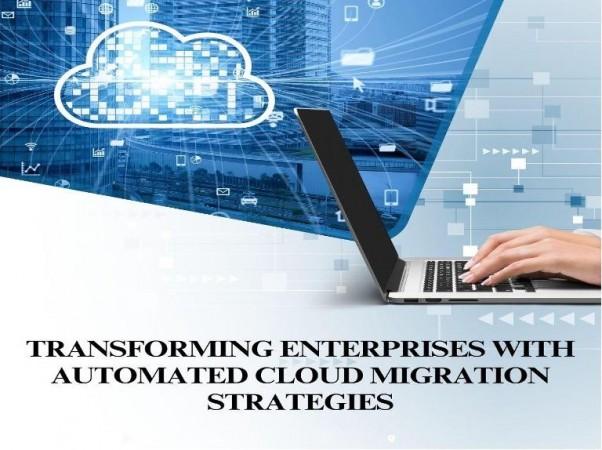
As organizations navigate the complexities of digital transformation, innovative strategies for migrating enterprise systems to the cloud are becoming indispensable. Krupal Gangapatnam, a thought leader in software architecture and cloud solutions, sheds light on the groundbreaking advancements in automated cloud migration processes in a recent analysis.
Rethinking Enterprise Resource Planning Systems
Enterprise Resource Planning (ERP) systems, once confined to on-premises environments, are now evolving into scalable, cloud-based infrastructures. This transition has redefined how organizations manage resources, leveraging tools like advanced parallel processing frameworks and automation scripts to overcome traditional challenges. By reducing migration timelines by up to 60% and minimizing manual intervention by 75%, modern migration strategies promise to revolutionize digital operations.
Leveraging Intelligent Automation
The integration of intelligent automation is a cornerstone of today's migration frameworks. Technologies such as AI-powered error resolution and machine learning-driven migration assessments are enabling organizations to achieve unprecedented efficiency. Automated scripts, for instance, manage data segmentation, compression, and validation, ensuring reliability and speed during migrations. Signal file monitoring and secure protocols further enhance process accuracy and resilience.
Replication Agent Mechanisms in AWS DMS
Replication agents in AWS Database Migration Service (DMS) play a crucial role as intermediaries between source and target databases, ensuring seamless data transfer during migration processes. These agents utilize advanced mechanisms to maintain data integrity and reliability, including data validation and integrity checking to ensure accuracy, and schema conversion where necessary to accommodate structural differences between databases. They optimize performance through parallel processing, accelerating data transfer rates, and implement automatic recovery to handle network interruptions without compromising data consistency. Additionally, they offer real-time monitoring and logging capabilities, providing continuous visibility into the replication process and enabling efficient troubleshooting and management.
Harnessing Artificial Intelligence
Artificial intelligence is transforming cloud migration by automating dependency mapping and forecasting resource requirements. AI-driven decision support systems provide cost optimization insights, predict potential bottlenecks, and suggest risk mitigation strategies. These capabilities empower enterprises to approach migrations with precision and confidence, ensuring robust outcomes.
SAP Cloud Migration Factory
The SAP Cloud Migration Factory is an advanced solution offering a comprehensive suite of automation tools tailored to streamline the migration of SAP workloads to the cloud. Its core components include Automated Discovery and Assessment Tools, enabling detailed analysis and planning; Migration Pattern Recognition, which identifies optimal migration pathways; Automated Code Remediation, simplifying code adjustments during the migration process; Business Process Testing Automation, ensuring functional integrity post-migration; and Data Migration Automation with Built-in Validation, which ensures accurate and secure data transfers. Recent insights from ASUG highlight SAP's enhancements in developer productivity tools, notably SAP Build Code and Vector Database for SAP HANA Cloud, which significantly boost migration efficiency by reducing time and complexity in adapting workloads for cloud environments.
Redefining Infrastructure Management
Infrastructure as Code (IaC) tools like Terraform revolutionize cloud provisioning with precision and reproducibility. They integrate seamlessly into CI/CD pipelines for efficient deployments, automate resource cleanup, and enable scalable solutions. By incorporating tagging strategies, they enhance cost management, accountability, and allocation tracking, ensuring streamlined operations and optimized resource utilization.
Business Benefits That Matter
The adoption of automated migration strategies has far-reaching impacts on business continuity and financial performance. By minimizing downtime, enhancing data security, and reducing operational costs, organizations often realize an ROI of 150-200% within the first 18 months of implementation. These solutions also enable companies to unlock advanced cloud capabilities, fostering scalability and innovation.
Future Directions in Cloud Migration
The future of cloud migration lies in the convergence of emerging technologies. Researchers are exploring blockchain for enhanced data integrity, quantum computing for faster processing, and edge computing for optimized distributed systems. Sustainability is also gaining traction, with energy-efficient strategies and carbon footprint tracking becoming integral to new frameworks. These innovations promise to make migrations not only smarter and faster but also more environmentally responsible.
In conclusion, Krupal Gangapatnam's insights highlight the transformative potential of automated cloud migration strategies. By leveraging these advancements, organizations are better positioned to meet the demands of an increasingly digital and dynamic business landscape. The journey to the cloud is no longer a daunting task but an opportunity to embrace innovation and drive growth.

















